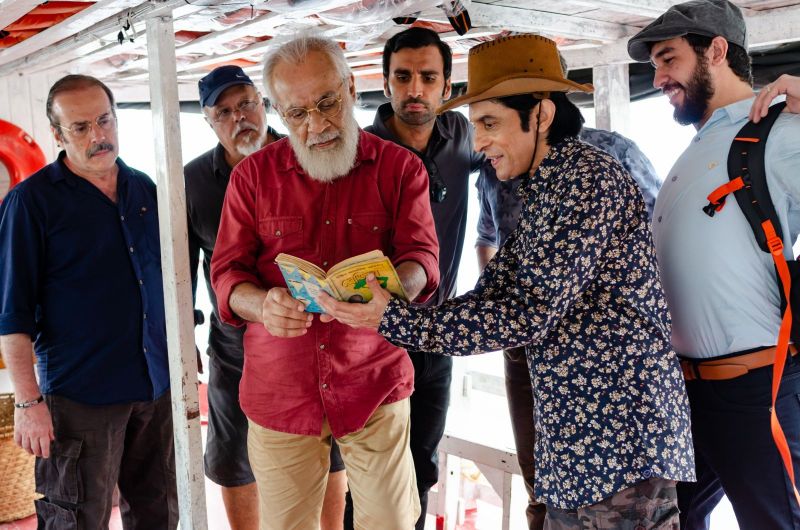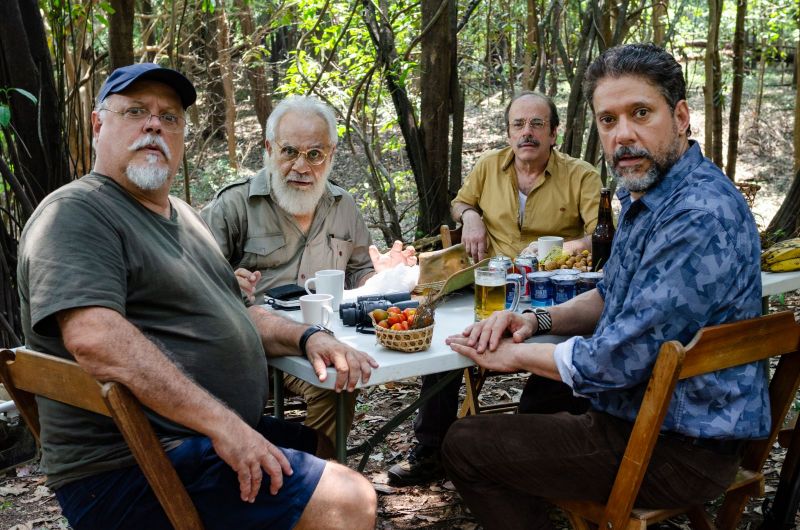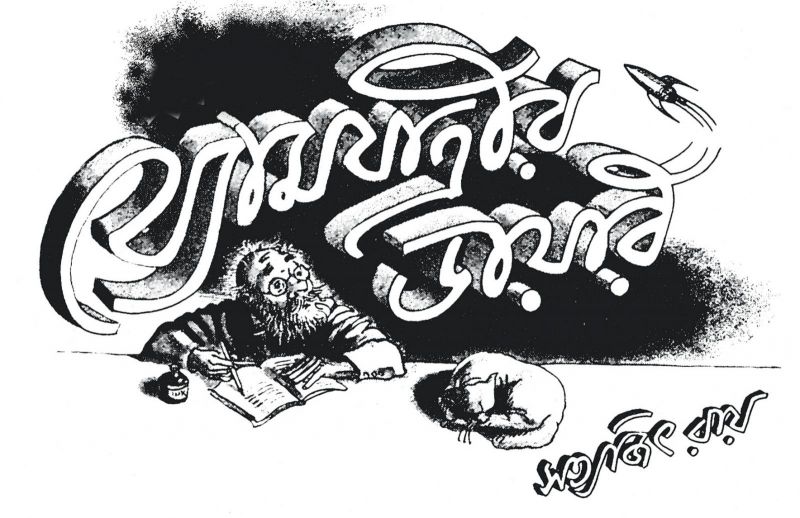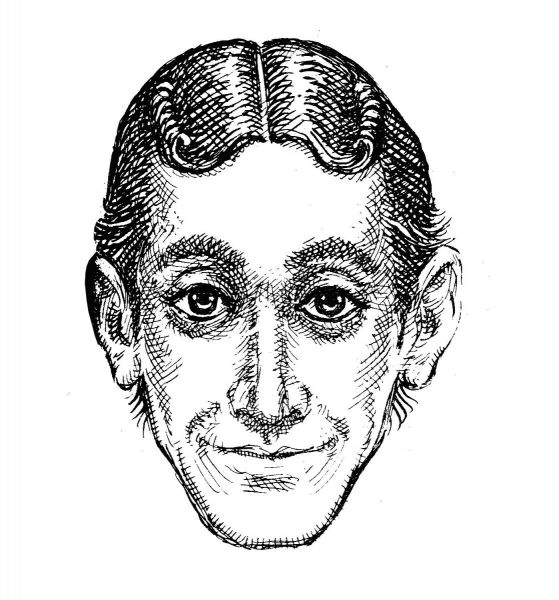Professor Shonku O El Dorado
Subscribe to read full article
This section is for paid subscribers only. Our subscription is only $37/- for one full year.
You get unlimited access to all paid section and features on the website with this subscription.
Not ready for a full subscription?
You can access this article for $2, and have it saved to your account for one year.
Professor Shonku O El Dorado: The First-ever Shonku Film Is Too Staid and Understated for a Generation Weaned on Marvel
Sandip Ray’s adaptation of his father’s Shonku story stays too close to the original to be able to break free cinematically
It’s been by all accounts the most-awaited film of the year, a cultural marker as it were – the first-ever adaptation of Satyajit Ray’s celebrated stories featuring the eccentric scientist Professor Trilokeshwar Shonku. Ever since the first Shonku story appeared in 1961 in Sandesh magazine, this globetrotting inventor of some of the craziest gadgets the human mind can conjure up has fired the imagination of an entire generation of readers of science fiction in Bengali, and later in English translations. (I am not sure any other language or author in India has engaged with science fiction writing of this class.)
So, it’s with some trepidation that one ventures to a screening of Sandip Ray’s adaptation of ‘Nakur Babu O El Dorado’ – given the adulation and cult status that the stories have garnered, it’s probably well-nigh impossible that a film adaptation will meet your expectations fuelled over forty years of living with the character and his zany world. To begin with, the film-maker follows the original story almost to a T. The only discernible changes entail bringing the narrative to 2016 (though most of that comes in the use of emails and mobile phones and not much else) and titling the film Professor Shonku O El Dorado. For the rest, watching the film is almost like reading the story on paper – which is oddly comforting in a way (though again one wishes that the film had retained the timeframe the stories were set in, when handwritten letters, telegrams were the primary modes of communication and even the telephone was a luxury). In fact, Satyajit Ray’s story mentions the Xerox and the tape recorder as inventions that Nakur Babu isn’t quite aware of (Nakur Babu actually learns Pitman’s shorthand!) In upgrading Shonku to the millennium, the film falls between two stools – belonging to neither era.

Make no mistake: this is good old-fashioned storytelling on-screen, but what I think of as the ‘magic’ of a Shonku story never quite translates to the screen. Where the stories left a lot to my imagination as a reader, the film, despite its honest-to-goodness approach to the original material, never quite breaks free of its roots. The stories left me ‘wow!’ – the film lacks the ‘wow’ factor. In the end what does appeal are the two lead performances. As Sandip Ray says in the interview, one can imagine no one but Dhritiman Chaterji as Professor Shonku, and the actor plays it just right, a twinkle in his eye, a sort of bemused pride on his face at the international accolades and adulation he receives everywhere he goes. Subhasish Mukherjee nails it as the clairvoyant Nakur Babu and owns every frame he is in. Sadly, the same cannot be said of the ‘international’ cast. Eduardo Munniz as Lobo, Ricardo Dantas as Jeremy Saunders and Roney Facchini as Wilhelm Krol all come across as rather stiff with really hammy accents and never quite convey the ‘international’ flavour. And that’s the film’s major failing and disappointment.

For someone who has grown up on Shonku stories, the film leaves you conflicted – happy to see the character realized on-screen so faithfully, yet wishing it had pushed the envelope a bit for a fuller cinematic experience. Hopefully, the film will do well enough for Sandip Ray to plan a series and go the extra mile with the next one.
The Shonku Fact File
• Satyajit Ray launched his career as an author in 1961 with ‘Diary of a Space Traveller’. It was the first story featuring Professor Shonku who instantly became a phenomenon.

• The first book in which Professor Shonku appeared was published in 1965 and was titled Professor Shonku (the stories in the collection were published between 1961 and 1965).
• Satyajit Ray dedicated this first book to his son Sandip Ray
• Shonku is a polymath in the truest sense of the term – in many ways an extension of his creator Satyajit Ray.
• In a symbolic way, Professor Shonku reminds us of Jagadish Chandra Bose, the great physicist. Firstly, Shonku, like J.C. Bose, could make all his highly sophisticated scientific instruments in India, without taking any help from European and American research centres. Secondly, J.C. Bose was a polymath. Bose was simultaneously a physicist, a botanist and an author.
• Satyajit Ray introduced a number of funny elements in the Shonku stories written between 1961 and 1965. Since 1967, the Shonku stories became serious. The serious tone lasted till 1991 when the final novella featuring Shonku was published just before Durga Puja.
• The illustrations in ‘Nakur Babu O El Dorado’ were painted in transparent watercolours mixed with opaque poster colours. Only Nakur Babu’s portrait was drawn in stark black and white with pen and ink.

• To get the location details right, Ray wrote to his friends in the cities Shonku was to visit, and spoke to the local consulates and embassies. He made extensive use of maps, brochures and postcards for the sake of authentic description.
A Few Crazy Inventions of Professor Shonku
• Omniscope: a 3-in-1 device that looks like a pair of spectacles, incorporating a telescope, a microscope and an X-ray
• Cerebrilliant: a pill that helps recover from head injuries instantly
• Remembrain: a helmet that helps you remember old or forgotten memories
• Miracurol: a pill that cures all diseases miraculously
• Annihilin Gun: a gun that can make anything disappear
Tags
About the Author
Shantanu Ray Chaudhuri is either an 'accidental' editor who strayed into publishing from a career in finance and accounts or an 'accidental' finance person who found his calling in publishing. He studied commerce and after about a decade in finance and accounts, he left it for good. He did a course in film, television and journalism from the Xavier's Institute of Mass Communication, Mumbai, after which he launched a film magazine of his own called Lights Camera Action. As executive editor at HarperCollins Publishers India, he helped launch what came to be regarded as the go-to cinema, music and culture list in Indian publishing. Books commissioned and edited by him have won the National Award for Best Book on Cinema and the MAMI (Mumbai Academy of Moving Images) Award for Best Writing on Cinema. He also commissioned and edited some of India's leading authors like Gulzar, Manu Joseph, Kiran Nagarkar, Arun Shourie and worked out co-pub arrangements with the Society for the Preservation of Satyajit Ray Archives, apart from publishing a number of first-time authors in cinema whose books went on to become best-sellers. In 2017, he was named Editor of the Year by the apex publishing body, Publishing Next. He has been a regular contributor to Anupama Chopra's online magazine Film Companion. He is also a published author, with two books to his credit: Whims – A Book of Poems (published by Writers Workshop) and Icons from Bollywood (published by Penguin Books).







.jpg)



